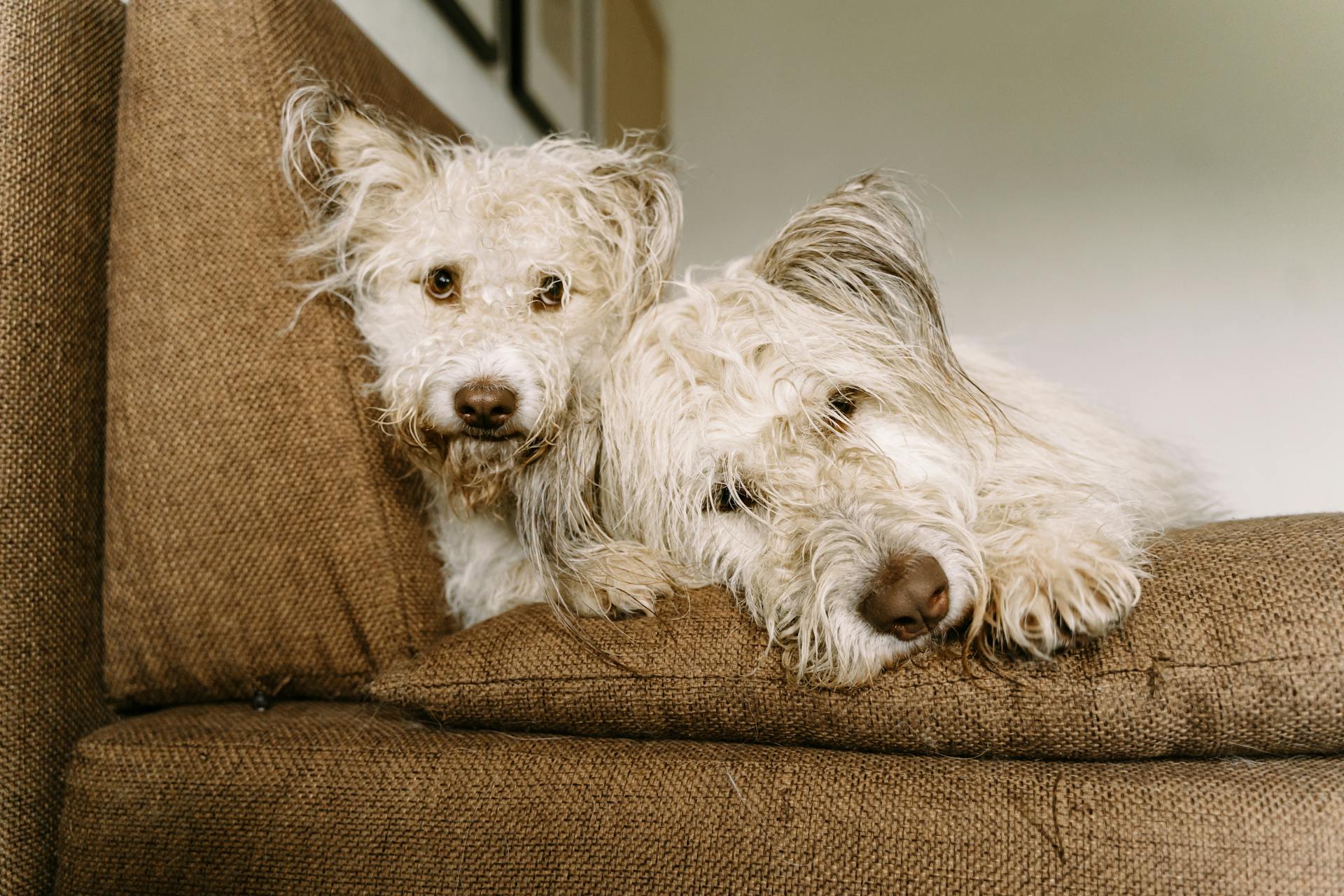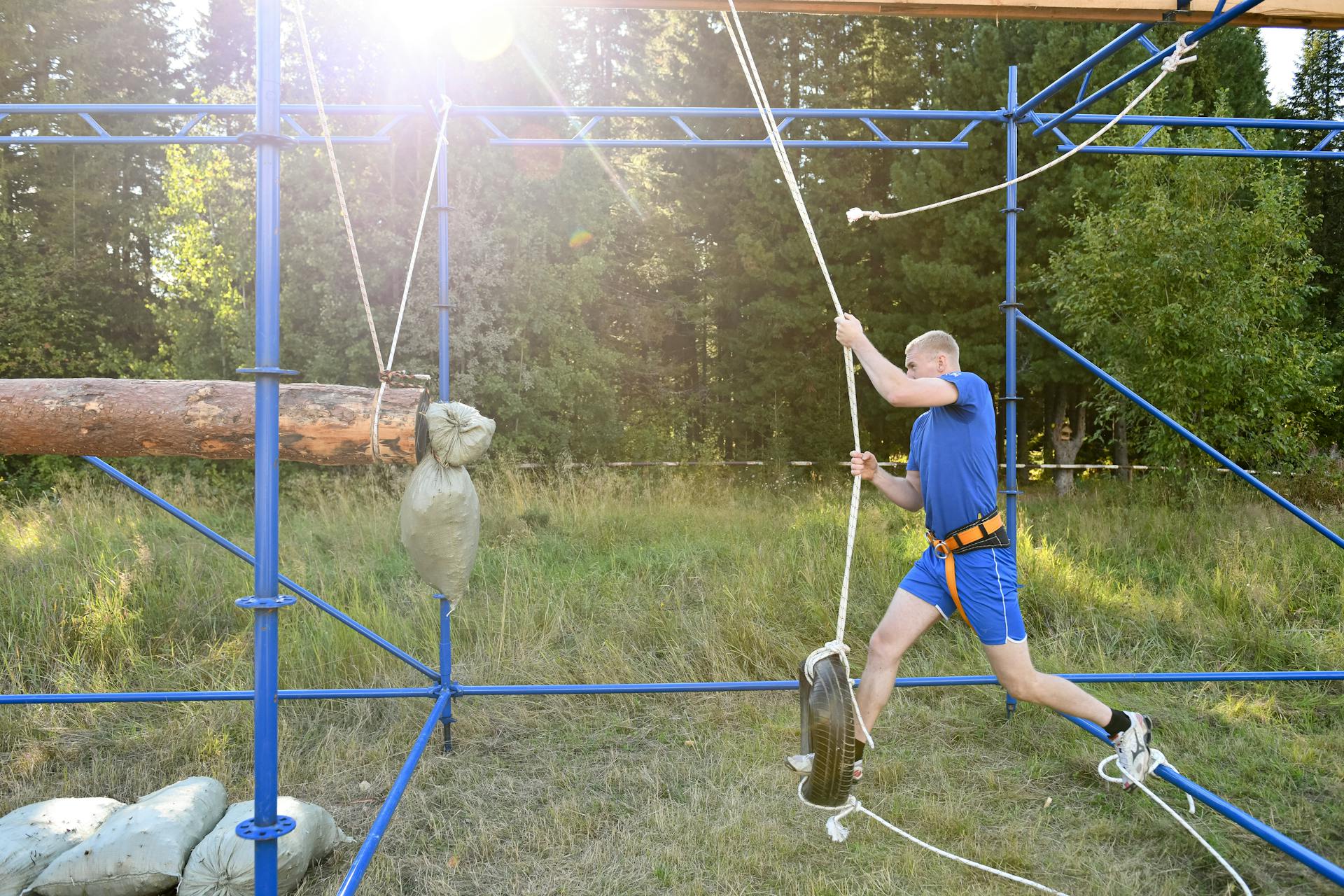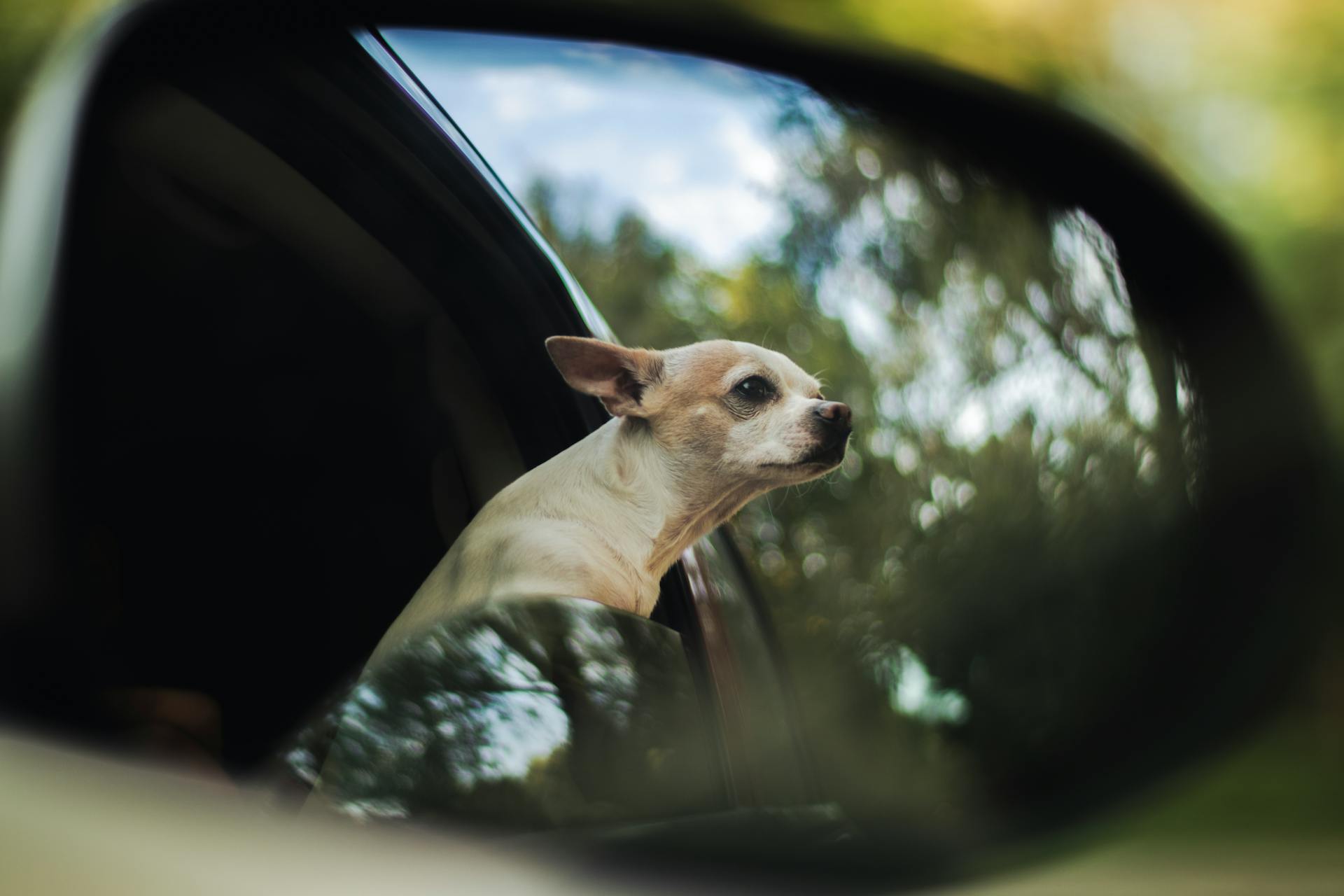
It’s no secret that dog walks can sometimes be a stressful experience for both the pet parent and their furry friend. Navigating crowded sidewalks, loud traffic and busy parks can create anxiety in our four legged friends, making it difficult to enjoy the walk and reap its benefits. However, there are many ways to ease dog anxiety during walks so that you can both enjoy the experience more fully.
1. Start Small: When it comes to facing fears and anxieties, it is best not to overwhelm your pup with too much sensory input at once; this will worsen rather than reduce their stress levels. Instead of immediately jumping into a long two-hour walk on a busy street try having shorter 10-15 minute leisurely strolling sessions in quieter places around town such as residential streets or empty parks – this gives your pup time to get used to his new surroundings before tackling busier environments.
2. Reward Good Behavior: Positive reinforcement is always an excellent tool when working with animals, so whenever your pup is feeling brave enough address his courage with treats or verbal praises such as ‘good boy’ or ‘good girl’– they will quickly pick up on what behaviors earn them these rewards! Additionally use calming signals such as scratching behind the ears or slow stroke through their fur which will help diffuse any tension further by releasing endorphins in both you and your pup resulting in a relaxed disposition.
3. Take A Break: If at any point during the walk you noticed signs of distress (elevated heart rate, panting quicker than usual etc.) take some time out along side of a quiet street somewhere where there’s little foot traffic -this break should remain short term– five minutes tops–then continue on immediately after offering ample rewards along the way signalling they did a good job facing their fears! Make sure not have these breaks too close together so they become something relishable and enjoyable rather than merely hiding from anxious feelings – reward every effort made!
4 Make It Familiar: If traveling often playing familiar tunes throughout your journeys has been known progressively desensitize pups during car rides which could apply similarly during walking trips too – however take note these sounds shouldn't appear after every encounter of something scary (as mentioned above) but occasionally subtlety dispersed throughout -the familiarity stays about disassociating negatives senses with locations upsetting previously associated experiences.
Overall taking steps like these listed above helps create consistency throughout each journey giving pets confidence if faced against similar circumstances again whilst simultaneously making our daily strolls far more enjoyable for us all!
You might like: What Dogs Get along with Chihuahuas?
What body language helps to calm an anxious dog on walks?
As pet owners, we often forget that our dogs can also feel anxious or stressed. Understandably, anxiousness in a dog can present itself in many physical ways while going on a walk. Body language is an invaluable tool that we can use to communicate with our furry friends and help calm them down when their anxiety levels are high.
The first step you should take when calming an anxious dog is to find out what body language they feel comfortable around and respond positively to. Some common body language cues include eye contact between the two of you, slow and steady movements, gentle interactions and vocalizations such as a low tone of voice or less barking/whining.
You might want to start off by simply standing still for a few moments and making eye contact with your pup - this can help show that you are aware of their presence and feeling relaxed yourself, which will likely be mirrored back from your pup too! While walking together - keep the pace nice & slow so that it doesn't become too daunting for them – stop regularly for little breaks at points during your journey where they are more comfortable such as near familiar places of interest like the park or hidden spots like behind trees or fences – this gives them time to explore but also makes sure they don’t get overwhelmed by anything unfamiliar around them so easily.
If possible – try playing some games with your pup while on walks! This could include interactive tug-of-war games with toys (that have been pre washed) as well as throwing tennis balls into bushes/grassy areas where there is something exciting for them to chase after & reward themselves once collected! A good amount of positive reinforcement using treats during these activities will not only help reduce any stress felt by your pup but also helps create more confident behaviour as well aw increase bonding between the two of you which will certainly benefit your daily walks together moving forward!
At the end of it all - if all else fails - be patient & persistent with soothing body rubs, belly scratches or ear massages right before entering into home territory after completing each walk successfully - this allows time for everyone involved including yourself to understand just how much progress has been made calmly!
Expand your knowledge: Pup Cup
How can I stop a dog from getting over-excited on walks?
No one likes to take a walk with their over-excited pup. Whether your dog is lunging, barking, or just being generally disruptive on walks, it can definitely ruin a leisurely stroll around the block. Luckily, there are some simple steps you can take to help prevent your dog from getting overly stimulated on walks and make them more enjoyable for everyone involved.
The first thing you should do is be sure to properly socialize your dog. Make sure they’re used to sounds, sights and smells they may encounter while out and about as this will help them keep calm even in potentially stimulating situations like encountering other dogs on walks or loud noises like sirens and traffic. Once your pup finishes puppy socialization classes or obedience school you’ll have the peace of mind knowing that he or she knows how to behave in most scenarios that arise during a walk.
Set up regular walking routines for your pup so he knows what is expected from him when going out for a stroll: stay at heel by their guardian’s side without pulling on the leash (especially whenever other animals are present) and come when called (even if distracted). A regular walking routine helps provide structure for dogs who may become over-stimulated if left unchecked during their outings; doing things in an organized manner also avoids chaotic trekking sessions where an excited pooch might try to act unpredictably due to lack of control exercised by its guardian's part.
Be sure also not to provide too much stimulation while out – try avoiding new areas each day as well as limiting treats given along the way; treat only special milestones such as mastering certain commands during the outing rather than dampening every second of being outside with goodies! When distractions occur – like other pups running around – practice ignore game until everyone passes by safely away from each other so nobody gets overly excited causing uncomfortable situations between both humans and animals involved; this also serves teaching purpose by giving clear cues about what behaviors are rewarded or avoided along with accompanied rewards thereafter making their desired behavior inevitable after a few repetition stages indicate it's learnt! Last but not least follow-up restroom breaks must never be skipped between long outings ensuring healthy recreations instead full body exhaustion often leading pet owners into unsupervised nuisances that could lead undesirable outcomes for again given human surroundings concerned either!
By following these simple steps you can ensure that next time you go for a walk with your pup it'll be much more pleasant experience all round!
Additional reading: How to Stop a Dog from Pacing around the House?
What treats can be used to soothe a scared dog on a walk?
Dogs can sometimes become scared while out on walks so it’s important to have the right treats along to help comfort them. There are a variety of treats that can be used to help soothe a scared dog and here are some of our top picks.
-Soft Chews: Soft chews like Wellness Natural Grain Free Soft Puppy Training Treats make for a great calming treat for scared dogs as they can help distract them from whatever is scaring them and provide comfort in their mouth. The soft texture makes it easier for dogs with sensitive mouths or who are teething puppies to eat.
-Frozen Treats: Making special homemade frozen treats for your pup is a great way to not only help ease their fear but also create something special just for them! Frozen yogurt blended with peanut butter or banana puree makes an amazing no mess treat that will keep your pup distracted and happy, plus beats the summer heat! You could even hide small bits of kibble in the frozen mixture as an extra bonus.
-Meat Treats: Meat treats like Bil-Jac Gooberlicious Chicken Dog Chewz are ideal when trying to calm down anxious dogs as they have higher quality ingredients than some commercially bought dog food - this includes added protein, minerals, vitamins, and omega fatty acids which provide overall health benefits while also helping settle tummy issues related to stress or anxiety.. Plus their tasty smoked chicken flavor will be an extra incentive for fearful pups!
Overall, having these types of calming snacks on hand can definitely come in handy if your pup ever gets scared during a walk or any other situation where he needs an extra bit of soothing.
A different take: True Chews Good
What techniques can be used to help a dog become comfortable with outdoor noises during walks?
Walking a fearful dog can be a challenge, especially when it comes to outdoor noises. It can be difficult to help dogs become comfortable with the loud sounds around them and cause more anxiety when out on walks. But fear not as there are some techniques that can be used to help your dog become more accustomed to outdoor noises, making your walking experience much less stressful for both parties involved!
The first technique is using desensitization and counter-conditioning methods. These two processes involve exposing your dog, in a safe and controlled environment, to the noise they may find intimidating or scary while providing positive reinforcement (treats or praise) at the same time. This will create associations of good things happening with that sound or noise rather than being scared by it and developing new behaviors aside from scary ones towards those noises over time.
Second technique involves teaching your pup an alternative behavior such as ‘Look’ or ‘Watch Me’ whenever they hear something that startles them on walks. If you redirect their attention towards you instead of what's scaring them this will shift their reaction from one of fearfulness into focus on you which is much more manageable for everyone involved!
Thirdly; consider what type of harnesses/body suits your pup would feel most comfortable wearing while outside? Anxiety in general leads dogs to feeling extremely vulnerable - therefore resulting in external items such as extra padding or pressure wraps could comfort them even further if used correctly during outings with loud noises present throughout the environment!
These are just some simple tips but practicing any combination might really help get results - all within properly ensuring safety for everyone too! Keeping a positive & patient attitude is key; so best of luck in helping your pooch become cozy with outdoor noises during their regular walks stress free & enjoyable again:)
Take a look at this: Cats Make Noises
How can I create a positive experience for my dog during walks?
Creating a positive experience for your dog during walks isn’t just about keeping them safe and healthy; it’s also about giving them an opportunity to explore and have fun. Here are some tips for creating positive experiences for your pup on their next walk:
1. Plan ahead: Know where your walks will take place and map out some routes ahead of time so that you can look out for potential hazards like busy roads and other dangers before embarking on the journey. Research areas that are friendly to dogs such as nearby parks and beaches, check with local authorities if they allow leashed petting in public parks and make sure you know where allpet- friendly buildings are located along the route.
2. Pack the proper equipment: Make sure you bring along a collar with proper identification tags, an appropriate leashthat is not too restrictive (for small breeds) or too slack (for large breeds), appropriate waste disposalbags, plenty of treats or toys depending on your pup's preferences, water, shade or umbrella in case of strong sunlight/ warm temperatures especially in summer months - as well as adequate pet- safe sunscreen if necessary -and last but not least a good quality poop scoop!
3. Take regular breaks: Walks don't need to be constant! Take regular stops for potty breaks or snacks, pause now and then do engage in playtime activities like fetching Frisbees between long stretches of walking – this will help keep him from feeling overwhelmed by constantly being on the move. Walks should always be a pleasurable activity; no one wants to end up getting lost because they were rushing through it too quickly!
4. Praise often & reward generously: The goal here shouldn't just be avoidance behavior either; rewardyour pooch each time they perform desired tasks such as walking close by without straying off into other directions or respond quickly whenever called upon – this way he'll soon understand that rewards should be expected after completing certain tasks which will ultimately lead to more consistent behavior over time when heading outdoors together
Expand your knowledge: Rabbits Quickly
What walking routes are best for an anxious dog to help reduce stress?
If your dog is feeling anxious, it can be a stressful and emotionally draining time for you both. Fortunately one of the best things you can do to help reduce anxiety in dogs is to take them for regular walks. Not only will getting out and about provide distraction and stimulation, but it also gives your pup an opportunity to burn off some additional energy – something all dogs need!
When choosing walking routes that are best suited for an anxious pup there are a few considerations. Firstly, try to walk in areas that are relatively quiet with less people and potential distractions. This might be a secluded park or taking ‘quieter’ routes around your neighbourhood which avoid busy streets or loud noises such as construction sites or car traffic. You might even want to consider avoiding popular dog parks that can become too crowded with other animals – even if your pup is usually happy socializing with others being overwhelmed by unfamiliar surroundings may add extra stress levels at this time so it’s important to find walking areas within safe distance from home which reduces excessive stimulation & helps him/her feel more comfortable & relaxed during the walk.
Another idea is mixing up the walking route regularly so he/she never becomes too used having ‘something new’ (scents, sounds etc.)to focus on during their exercise regime instead which further helps reduce any long term anxieties caused by more predictable walks each day/week.. Additionally another great way of reducing stress whilst out-and-about would be allowing sniff stops as often as possible; letting him stop when he pleases rather than trying set pace means he can take his own lead helping keep control of fear inducing experiences whist looking into something else providing comfort & reassurance along the road ahead!
Check this out: What Is the Time on the White Rabbit's Pocket Watch?
Sources
- https://www.barkva.org/ease-dog-anxiety-on-walks/
- https://www.holistapet.com/dog-care/how-to-calm-an-over-excited-dog/
- https://pethelpreviews.co.uk/how-to-calm-an-anxious-dog-on-walks/
- https://www.wikihow.pet/Keep-Your-Dog-Comfortable-Outdoors
- https://petdogowner.com/my-dog-is-out-of-control-on-walks-why-how-to-stop/
- https://www.doggoneproblems.com/max-too-excited-before-walks/
- https://philosophyofdog.com/how-to-soothe-an-anxious-dog/
- https://smartdogowners.com/how-to-ease-dog-anxiety-on-walks/how-to-ease-dog-anxiety-on-walks-2/
- https://wikidoggia.com/post/how-to-ease-dog-anxiety-on-walks
- https://dogsvets.com/5-tips-to-help-calm-your-anxious-dog/
- https://unionlakepetservices.com/blog/fearful-fido-13-tips-for-when-your-dog-is-anxious-on-walks
- https://smartdogowners.com/how-to-ease-dog-anxiety-on-walks/
- https://askcorran.com/tips-for-a-positive-walking-experience-with-your-dog/
- https://www.k9ofmine.com/ease-dog-anxiety-on-walks/
- https://thebeacondog.com/insights/how-do-i-stop-my-dog-from-pulling-on-walks
Featured Images: pexels.com


